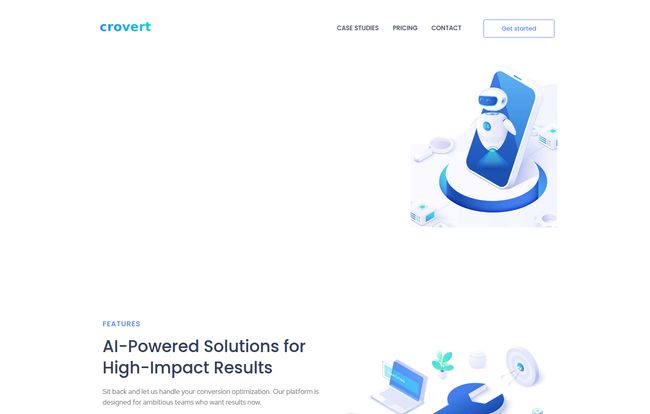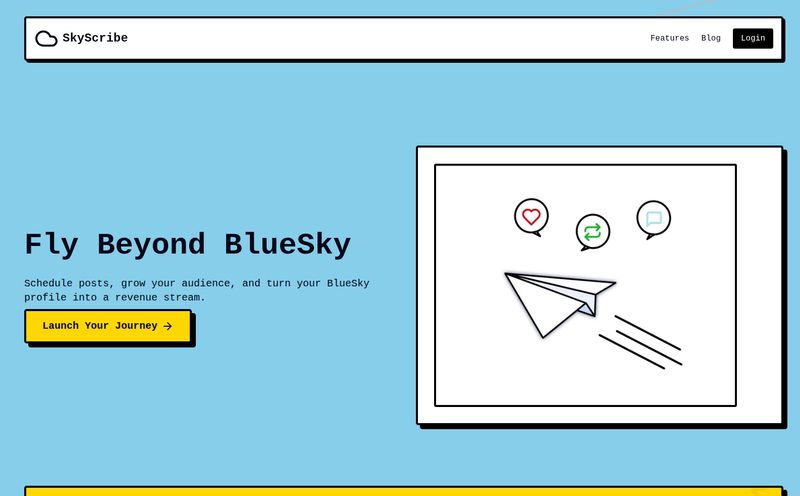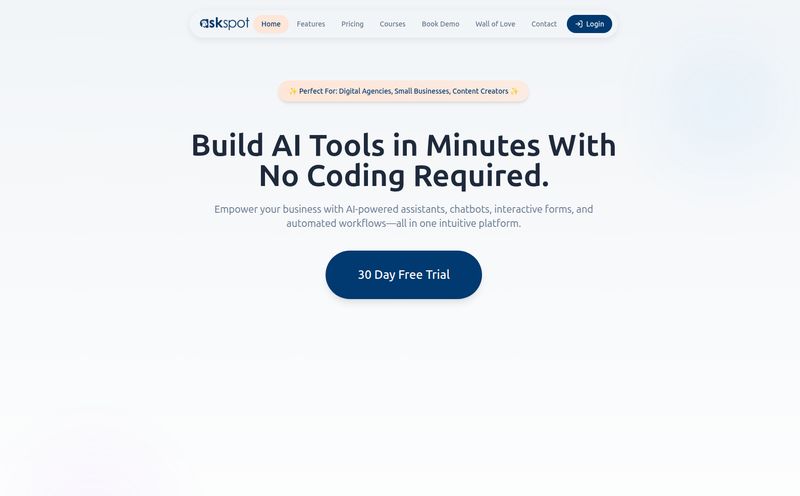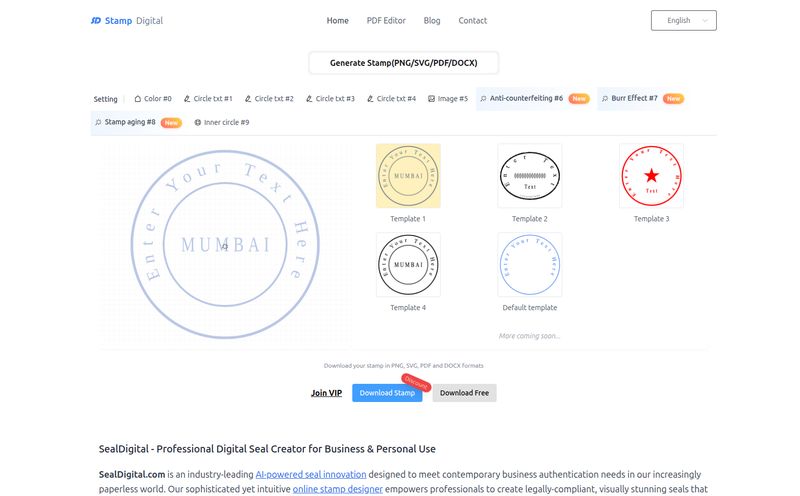If you've been in the digital marketing or SEO game for more than a few months, you know the dance. You pour over heatmaps, stare at Google Analytics until your eyes cross, and come up with a brilliant hypothesis. "If we just change this button color from blue to green," you declare, "conversions will skyrocket!"
Then comes the hard part. You file a ticket. You wait for the dev team. They're swamped. Two sprints later, your little green button goes live. You run the A/B test for a month, only to find it made absolutely no difference. Rinse and repeat. It's the conversion rate optimization (CRO) hamster wheel, and it can be maddening.
So when a tool like Crovert comes along, with a homepage that boldly claims it can "Eliminate Your Dev & Design Teams," my inner skeptic raises an eyebrow. But my pragmatic side—the one that's tired of waiting in development queues—leans in. An AI that not only finds optimization opportunities but also implements them for you? Instantly? Okay, you have my attention.
So, What Exactly Is This Crovert Magic?
At its core, Crovert is a generative AI platform. This isn't just another tool that gives you a report full of suggestions you have to implement yourself. No, this is different. It's designed to actively tinker with your website's UI (User Interface), UX (User Experience), and even on-page SEO elements to find the combinations that get more people to click, buy, or sign up.
Think of it like having a tiny, hyper-caffeinated CRO specialist who is also a front-end developer and a UI designer living inside your website. 24/7, it's testing variations—moving a call-to-action, changing a headline, adjusting image placement—and using machine learning to double down on what works and discard what doesn't. All without you having to write a single line of code or a single Jira ticket.
It's a powrful concept. And frankly, it’s where the industry is heading. We're moving from diagnostic tools to prescriptive, automated solutions.

Visit Crovert
The Features That Actually Matter
A feature list is just a list. What matters is what it does for you. Here’s my breakdown of what makes Crovert tick.
Automated A/B Testing on Steroids
Forget setting up Variant A versus Variant B. Crovert takes a more fluid, multivariate approach. It's continuously testing dozens, if not hundreds, of micro-changes simultaneously. This isn't your classic A/B test; it's more like a relentless evolutionary process where only the fittest website elements survive. This means you get to statistical significance way faster and without the manual setup that makes most marketers want to pull their hair out.
Generative UI/UX and SEO Optimization
This is the secret sauce. Crovert doesn't just suggest you change a headline; it writes a new one and tests it. It doesn’t just say your form is too long, it creates a shorter version. It can tweak your site structure and internal linking to improve user flow and even give your SEO a little nudge. This is a big leap from the tools we're used to. It's the difference between a consultant giving you a blueprint and a contractor actually building the house.
Real-Time Analytics without the Headaches
I love data, but I hate messy dashboards. Crovert promises to deliver the insights without the clutter. You get real-time performance data that’s directly tied to the changes being made. You can see what the AI is doing and what effect it's having, connecting the action to the result in a beautifully simple feedback loop.
Do You Really Throw Out Your Dev Team for an AI?
Okay, let's address the elephant in the room. The claim that you can eliminate your dev and design teams is… well, it's marketing. Great marketing, maybe, but let's add some nuance.
For a solopreneur, a freelancer, or a small business without a dedicated tech team, Crovert could genuinely be a substitute. It gives them optimization capabilities they simply wouldn't have access to otherwise. It’s a massive force multiplier.
But for a larger organization? I see it differently. It's not about replacing your talented developers and designers. It’s about liberating them. Let the AI handle the tedious, iterative CRO grunt work. Let it optimize button placement and CTA text for the hundredth time. This frees up your human team to work on what they do best: big-picture strategy, building new core features, and creative problem-solving that requires a human touch and a deep understanding of the brand's soul. An AI can optimize a checkout page, but it can’t invent a whole new product category.
It’s a collaboration, not a replacement. And that’s a future I can get behind.
Let's Talk Money: A Look at Crovert's Pricing
So, what does this automated future cost? The pricing structure seems pretty logical, scaling with your needs. I've laid it out in a simple table to make it easy to compare.
| Plan | Price | Best For | Key Feature |
|---|---|---|---|
| Free | $0/month | Kicking the tires and initial insights. | 5 CRO recommendations (manual implementation). |
| Starter | $99.95/month | Small businesses & freelancers who want more data. | Up to 20 CRO recommendations and alerts. |
| Growth | $249.95/month | Growing startups & businesses ready to automate. | Automated implementation - this is the game-changer. |
| Professional | $499.95/month | Enterprises needing integration and dedicated support. | CRM/Analytics integration and consultation calls. |
The Growth plan is clearly where the real magic is. The automated implementation is the core value proposition, and that's where you unlock it. The Free and Starter plans are great for getting a feel for the platform's recommendations, but if you're serious about this, Growth is the target.
My Honest Take: The Good, The Bad, and The AI
After digging in, I'm genuinely intrigued. The potential here is enormous.
The Good: The speed and efficiency are undeniable. It takes the most time-consuming part of CRO and puts it on autopilot. For teams stretched thin, this could be the difference between stagnating and growing. It democratizes high-level optimization.
The 'Be Aware': There's going to be a learning curve to really master this. And the effectiveness hinges on the quality of your existing site—the AI needs good material to work with. My biggest concern? The risk of creating sterile, 'optimized-to-death' websites that all look the same and lack a distinct brand personality. You still need a human with taste to set the guardrails and say, "No, AI, that's incredibly ugly, even if it converts 0.2% better."
Conclusion: Is Crovert the Future of Web Optimization?
Is Crovert going to put us all out of a job? No. But is it going to change how we work? Absolutely. Tools like this are an evolution. They're taking over the repetitive, data-crunching tasks that bog us down, freeing us up to be more strategic and creative.
I see a future where an SEO strategist or a marketing manager uses Crovert as their primary tool for on-site optimization, guiding the AI's efforts and then using the time saved to focus on bigger campaigns, better content, and stronger brand-building. It's a powerful assistant, not a replacement. And for any of us who've been stuck on that hamster wheel, that sounds pretty darn good.
Frequently Asked Questions
- Does Crovert replace my need for an SEO specialist?
- Not at all. It's a tool an SEO or marketer would use. It handles on-page and UX tweaks, but it doesn't do keyword research, backlink building, or high-level content strategy. It makes an expert more efficient, it doesn't replace them.
- Is Crovert difficult to set up?
- It's advertised as a zero-code setup, which is great for accessibility. However, like any powerful tool, there will be a learning curve in understanding its reports and guiding the AI to get the best results for your specific brand and goals.
- What kind of websites benefit most from Crovert?
- Websites with clear conversion goals will see the most benefit. Think e-commerce stores, SaaS companies with trial sign-ups, and lead generation sites. If you have a specific action you want users to take, Crovert is built to optimize for it.
- Can I really trust an AI with my website's design and branding?
- You're still in the driver's seat. The AI operates within the parameters you set. It’s best to view its changes as data-driven suggestions. You have oversight and can guide the process. It's not a 'set it and forget it' solution if you have a very strong brand identity to protect.
- How is this different from tools like Google Optimize or VWO?
- Traditional A/B testing platforms like those are tools for manual testing. You have to come up with the ideas, create the variants, and set up the test. Crovert is generative; it comes up with the ideas and implements them automatically and continuously, which is a significant difference in workflow.
Reference and Sources
- Crovert Official Website
- Crovert Pricing Page
- CXL - AI in Conversion Optimization: Can AI Replace a CRO Specialist?



